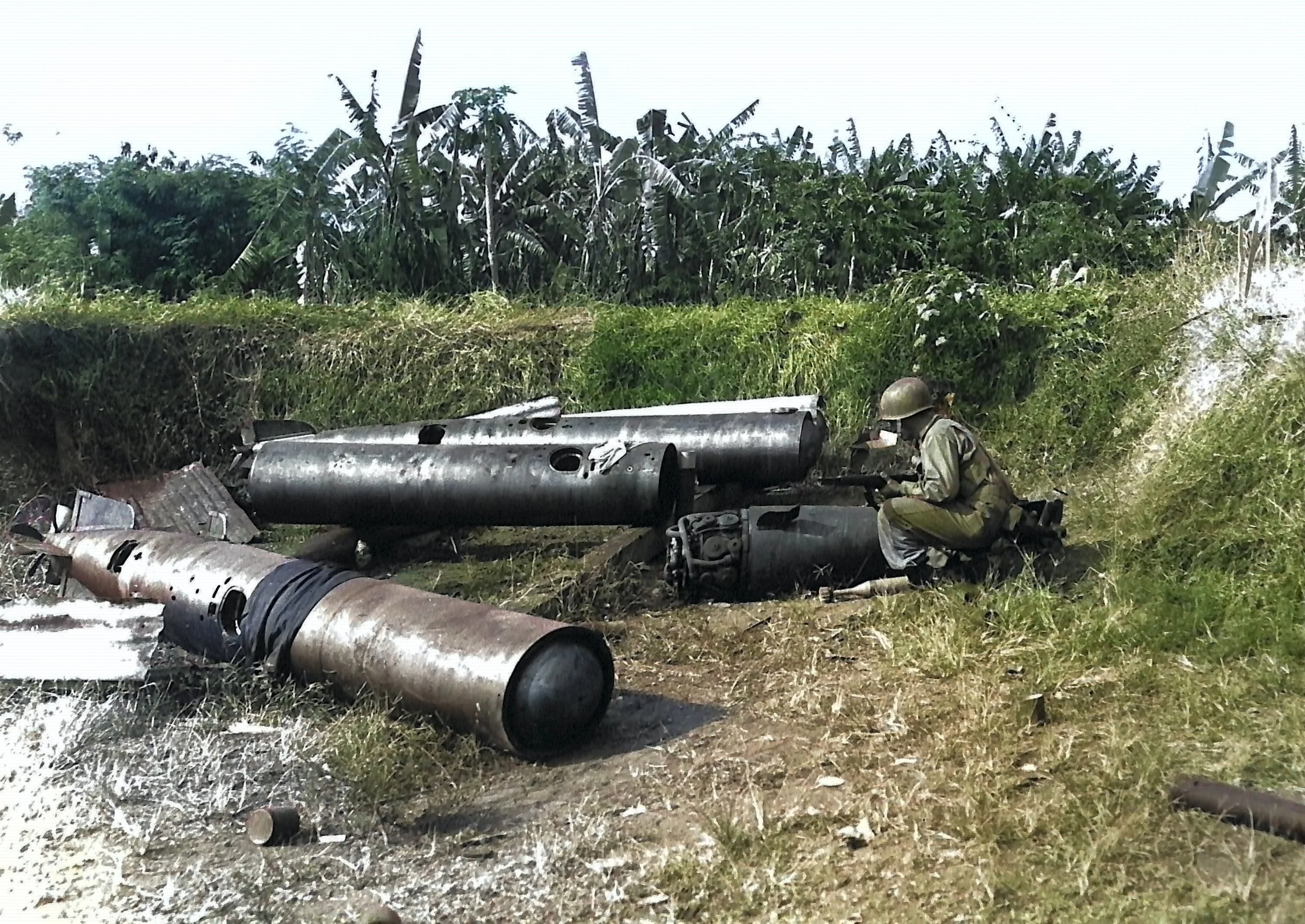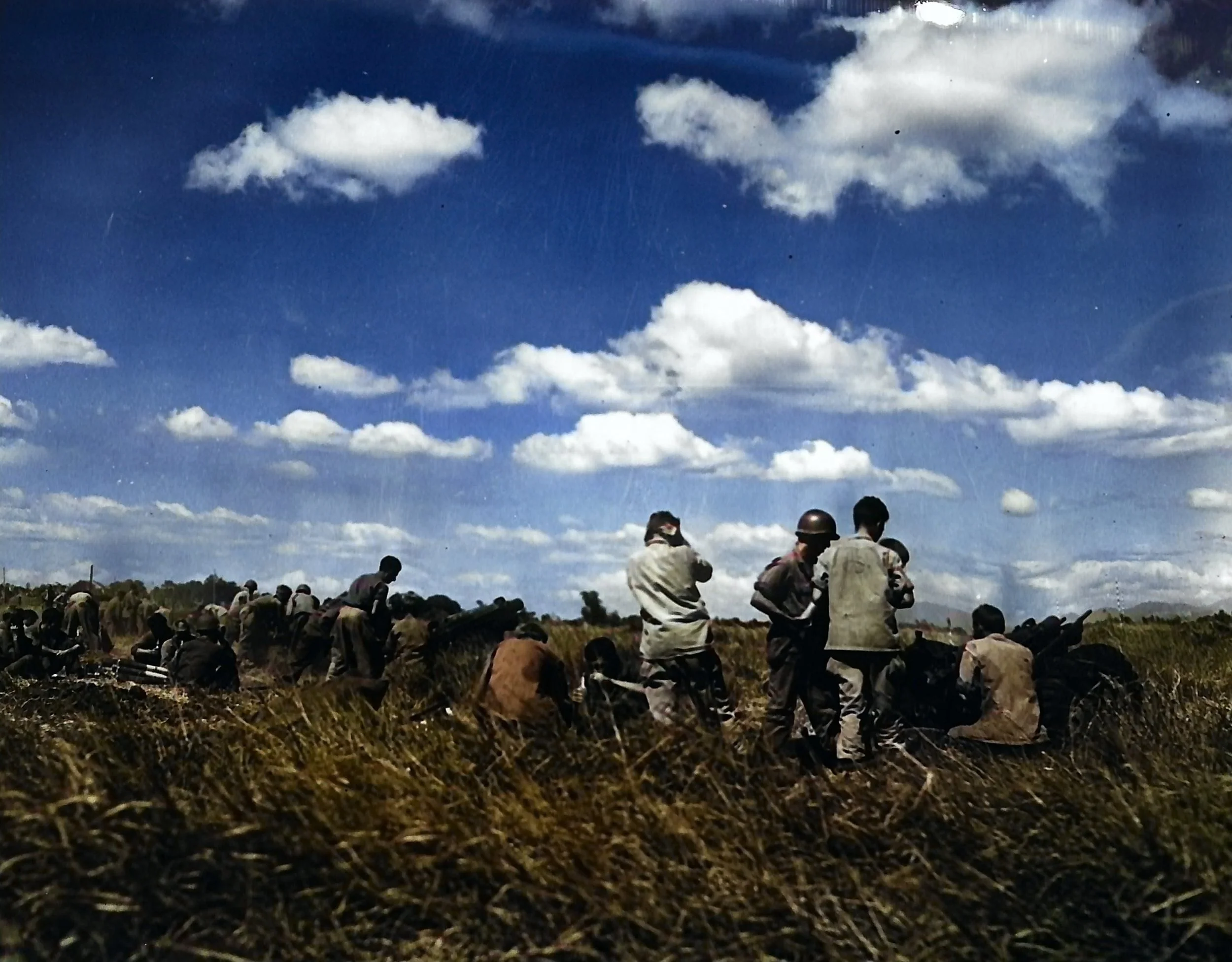Tuesday, 13 February
Nichols Field Falls
A US Marine Corps SBD Dauntless dive bomber takes off on Luzon
US National Archives
As the fighting continued to overcome the Police Station the 129th made no notable progress today, but the 148th on their southern flank resumed their drive from Taft Avenue, pushing hard for Manila Bay. As they approach it, they are finally able to get limited air support, with US Marine SBD Dauntless dive bombers making precision attacks against Japanese positions near Dewey Boulevard and Burnham Green.
As the Americans continued to reduce the size of the Japanese controlled area of the city, the bombardment only increased in intensity, as more guns are brought to bear against it. Today American shells hit Remidios Hospital, partially collapsing the structure. Despite the civilians there attempting to signal a USAAF spotter plane, the bombardment continued, killing 400 of the 1,000 sheltering within. In addition, shells also hit St. Scholastica College and partially collapsed the building on the refugees sheltering there. The street fighting remained intense, able to rival that seen in European cities like Stalingrad years prior, or Berlin in the coming months.
A GI inspects Japanese torpedoes partially disassembled on Nichols Field
US National Archives
On what remained of the Genko Line, a major victory was won as Nichols Field finally fell after a week of hard fighting. The battle had been intense, with the paratroopers advancing yard by yard against reinforced Japanese positions to take the field, and now the advance turned to Nielson Airport and Fort McKinley. Joined by the 1st Cavalry, they were able to secure the airport after a brief but fierce fight, repelling a major Japanese counterattack in the afternoon as the main force moved against Fort McKinley. Banzai charges were becoming common, including on the 11th Airborne’s field artillery, so much so that the commanding officer of the 675th Glider Field Artillery Battalion issued a sarcastic requisition for bayonets for his howitzers.
US pack howitzers in action near Nichols Field
US National Archives
During the assault on Fort McKinley, Private Manuel Perez Jr. of the 11th Airborne was awarded the Congressional Medal of Honor for his actions today, attacking Japanese pillboxes alone and clearing them with grenades to allow his unit to advance further.
Also of note, today Admiral Iwabuchi received orders from Shimbu Group to relocate immediately to Fort McKinley, the commander of the Army force unaware that the position had been cut off from the MNDF commander. His counterattack was still planned to facilitate a breakout of the Japanese forces in the city, and General Yamashita was increasingly pressuring Shimbu Group to get Iwabuchi out of the city, but the Admiral refused to respond in any significant way to the incoming orders.
In the city the Japanese still did not relent in their efforts against the civilians. An order was issued from Admiral Iwabuchi’s headquarters regarding the slaughter today:
“When Filipinos are to be killed, they must be gathered into one place and disposed of with consideration that ammunition and manpower must not be used to excess. Because the disposal of dead bodies is a troublesome task, they should be gathered into houses which are scheduled to be burned or demolished. They should also be thrown into the river.”
Another foreign legation was attacked today, with the Venezuelan ambassador being executed at his consulate. The Japanese also attacked the Malate Church today, killing all but one of the priests there, who was in turn killed by US artillery fire at Remidios Hospital. In the Philippine General Hospital, close to the positions of the advancing Americans, 7,000 were taking shelter, being used as human shields by the Japanese fortifying the building, as the first American shells begin to land on the structure. Finally, at Admiral Iwabuchi’s headquarters at Fort Santiago, a cold report blandly states that the last of the prisoners there are killed by 1600, ending a spree of killing that has been ongoing for almost a week in the dark dungeons of the old Spanish fortress.
Shells land around the San Miguel Cold Storage Plant on the south bank of the Pasig as the Americans advance
US National Archives
At De La Salle College five year old Fernando Vasquez-Prada, wounded by Japanese bayonets the previous day, stayed by his mother. She would lie among her dead family as the Japanese periodically returned to the college to rape the women, living or dead, and loot valuables. They placed glasses of water next to the victims, knowing that if they merely feigned death that the tropical heat would force them to drink, and they bayoneted anyone whose glass was disturbed whenever they returned. Father Cosgrave had finally extricated himself from the mound of corpses in the night, and had busied himself with providing last rites to the dying. He would later report how many of the victims prayed for the forgiveness of the Japanese who had attacked them.
Manila: February 12, 1945
Encountering heavy resistance at the Police Station US forces push out of the perimeter at Provisor Island
US forces reach the Philippine General Hospital, finding the Japanese have dug in at the facility, using patients as human shields
Heavy fighting continues as the Americans slowly push toward Rizal Stadium
After more than a week of brutal combat, Nichols Field finally falls, causing the Genko Line to collapse
What remains of its defenders pull back into the perimeter around Fort McKinley
Major War Crimes
Malate Church - The priests and refugees here are today executed by a squad of Japanese troops




